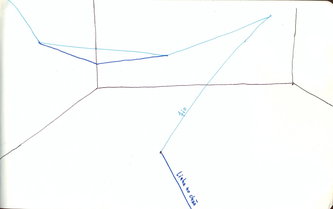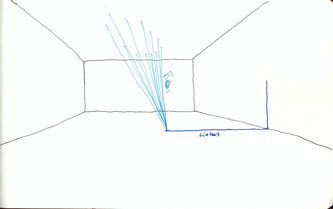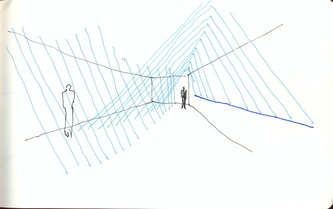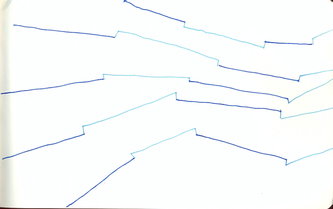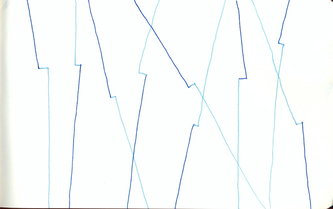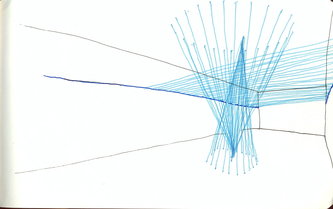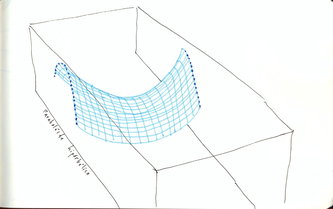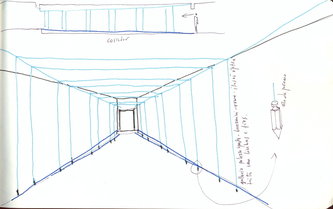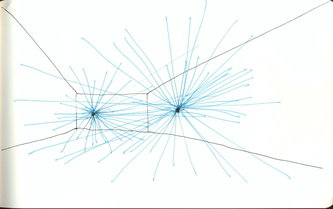BEATING LINE
João Palla (architect)
In collaboration with Pedro do Ó (designer/photographer)
and João d’Olivença (constructor/photographer)
15 – 24 July 2010
BEATING LINE
In construction techniques, after pinning the extremities of a thread with nails and covering the thread with a blue pigment, the line is BEATEN. It is in this act of BEATING (the) LINE where the momentum of drawing can be found: at the transfer from thread to line, from matter to mark, both blue. The line is ‘beaten’ horizontally and then elevated vertically. A line-up system is then set up guiding the elements which will constitute this work through a specific use and combination of straight lines.
If on bi-dimensional drawing the use of line might risk the ‘fixation’ of forms, here line is used as an element that configures real space, making it sensible. And in this case, by using the physicality of line as a kind of body, this also confers a certain kind of physicality to space which poses the supporting/tension points, the mesh, volumes and dynamics created by the line, in an immediate relation with the architectonic structures of the space to which it adheres. From the operator of lines to the visitor of the space, the physicality of different bodies and its movement in space will then become the sensible element sustaining this work.
From the various construction line-ups to the structural tissue and its movements, drawing might in this sense reside on the manifestation or elaboration of a speculative idea, familiar to drawing, articulated to a series of actions, familiar to specialized procedures to those who operate it. Transfer methods will be used to place a drawn line on a wall or floor, and lines will be arranged to configure a particular spatiality made evident through a particular materiality. This sequence of operations will finally constitute the «plastic object».
CVs
In construction techniques, after pinning the extremities of a thread with nails and covering the thread with a blue pigment, the line is BEATEN. It is in this act of BEATING (the) LINE where the momentum of drawing can be found: at the transfer from thread to line, from matter to mark, both blue. The line is ‘beaten’ horizontally and then elevated vertically. A line-up system is then set up guiding the elements which will constitute this work through a specific use and combination of straight lines.
If on bi-dimensional drawing the use of line might risk the ‘fixation’ of forms, here line is used as an element that configures real space, making it sensible. And in this case, by using the physicality of line as a kind of body, this also confers a certain kind of physicality to space which poses the supporting/tension points, the mesh, volumes and dynamics created by the line, in an immediate relation with the architectonic structures of the space to which it adheres. From the operator of lines to the visitor of the space, the physicality of different bodies and its movement in space will then become the sensible element sustaining this work.
From the various construction line-ups to the structural tissue and its movements, drawing might in this sense reside on the manifestation or elaboration of a speculative idea, familiar to drawing, articulated to a series of actions, familiar to specialized procedures to those who operate it. Transfer methods will be used to place a drawn line on a wall or floor, and lines will be arranged to configure a particular spatiality made evident through a particular materiality. This sequence of operations will finally constitute the «plastic object».
CVs
